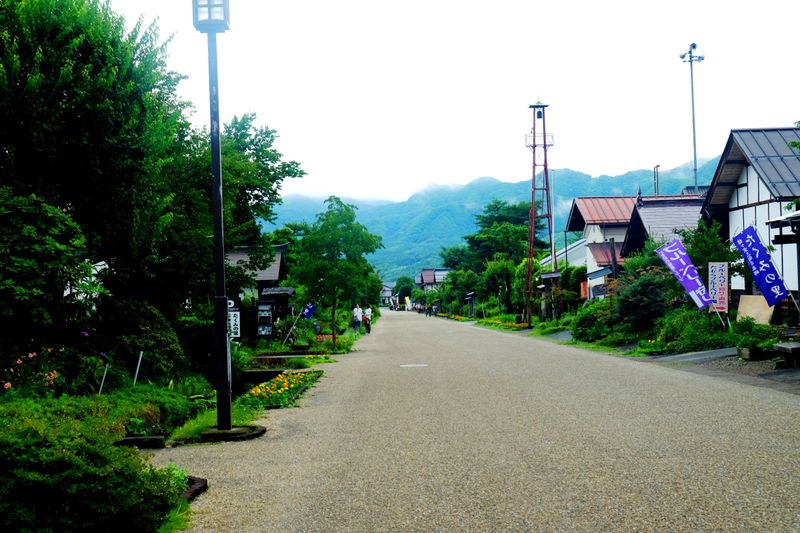Aug 8, 2018
Gallery - Takumi No Sato

MINAKAMI,GUNMA - Located in one of the famous onsen (hot springs) ‘Eden’ in Japan, Takumi no Sato provides creative and fun activities like woodworking, painting, weaving, pottery, and making soba (buckwheat noodles), to share and promote Japanese culture to its visitors. History Takumi no Sato, or ‘Artisan Village,’ was created to vivify its tourism. Before it became Takumi no Sato, it used to be a thriving area and a resting place for travellers, dating back to the Edo period. However, as transportation developed and many of its surrounding changed, people visiting the place became less. Mr. Susumu Kawai, a village officer, wanted to use its culture, history, and impeccable scenery to entice visitors. Hence, in 1985 to 1987, five workshops opened and it was then called ‘Takumi no Ie.’ But as time went by, these workshops multiplied and as of now it has around 20 shops. which promote creativity and Japanese culture to the world. Shops and Services With a rustic vibe to it, going to Takumi no Sato makes you feel you are walking into Japan’s early days. No big screens, no flashing neon lights, no loud noises from crowds and cars. It’s just the sound of nature, the captivating landscape, and cosy houses. Here is the list of workshops you can enjoy in Takumi no Sato: 1. The Soba Workshop Learn how to knead and cut buckwheat noodles from the expert. Then, you can savour your own noodles! 2. The Kaori House You can make your own ‘konnyaku’ (jelly from konjac yam) 3. The Matchbox Art House Use a matchbox as a canvass for your masterpiece. 4. The Kiori House By weaving wood fibers together with silk, you can create the fabric ‘kiori,’ which can be used with bags and other items. 5. The Washi House Also known as Japanese paper, learn how to make a pulp into a beautiful piece of paper. You can also decorate it with pieces of paper and leaves. Plus, the instructor could speak a bit of English! 6. The Indigo House Visitors can dye handkerchiefs and scarves 7. The Glass House Make your own glass with beautiful patterns with blown emery 8. The Pottery House Get more creative by doing your own vase, sake bottles, etc. 9. The Doll House Use scraps of clothes to make dress for your handmade dolls 10. The Rock Painting House Draw your own design and have fun painting rocks! 11. The Straw House Learn to make sandals by using straw 12. The Cloisonne House Create your own enamelware accessories 13. The Agriculture Workshop Aside from soba, you can learn how to prepare udon, pies, and pickles 14. The Dried Flower House Use dried flowers and twigs in making your own decoration. 15. The Bell House Be imaginative and paint your own bells! 16. The Pressed Flower House Instead of buying postcards or bookmarks, why not make your own by pressing flowers? 17. The Fureai House Make your own soba and buy fresh veggies and fruits 18. The Bamboo House Create variety of things out of bamboo 19. The Woodwork House Learn the art of traditional wood craftsmanship of Niiharu 20. The Mask House Enjoy painting your own mask 21. The Crape Workshop Get crafty with colorsand crapes! Note: The workshop fees vary, it’s around a thousand yen and up. Additional Info Things to Remember: Before starting to browse around, make sure to visit the INFORMATION CENTER at Takumi No Sato, which is located near the parking lot, to get a map. They have English maps as well, making it very convenient. The map includes all of the workshops in Takumi no Sato, so navigating the whole village will be a lot easier. You could also rent a bike Schedule: It opens from 9am- 5pm, however some shops close at 4pm. With regards to holiday breaks, it depends on every shop. You may contact their information center at +81 278 64 2210. Parking & Admission: Free. How to get there: From Jomo-Kogen Station, take the bus going to Takumi No Sato or Sarugakyo. It takes about 20-25 mins and costs 730 yen (one way). You can get a bus schedule from the train station. They also have it in English. Take note that the BUS STOP going to Takumi no Sato and going back to Jomo-Kogen Station are the same. By car, take the Tsukiyono IC of Kan-Etsu Expressway. It’s about 20 mins.
